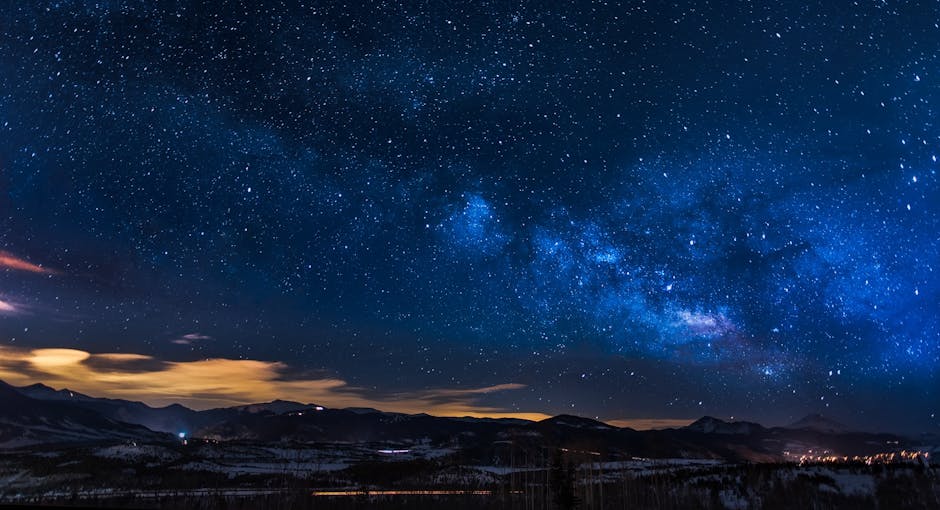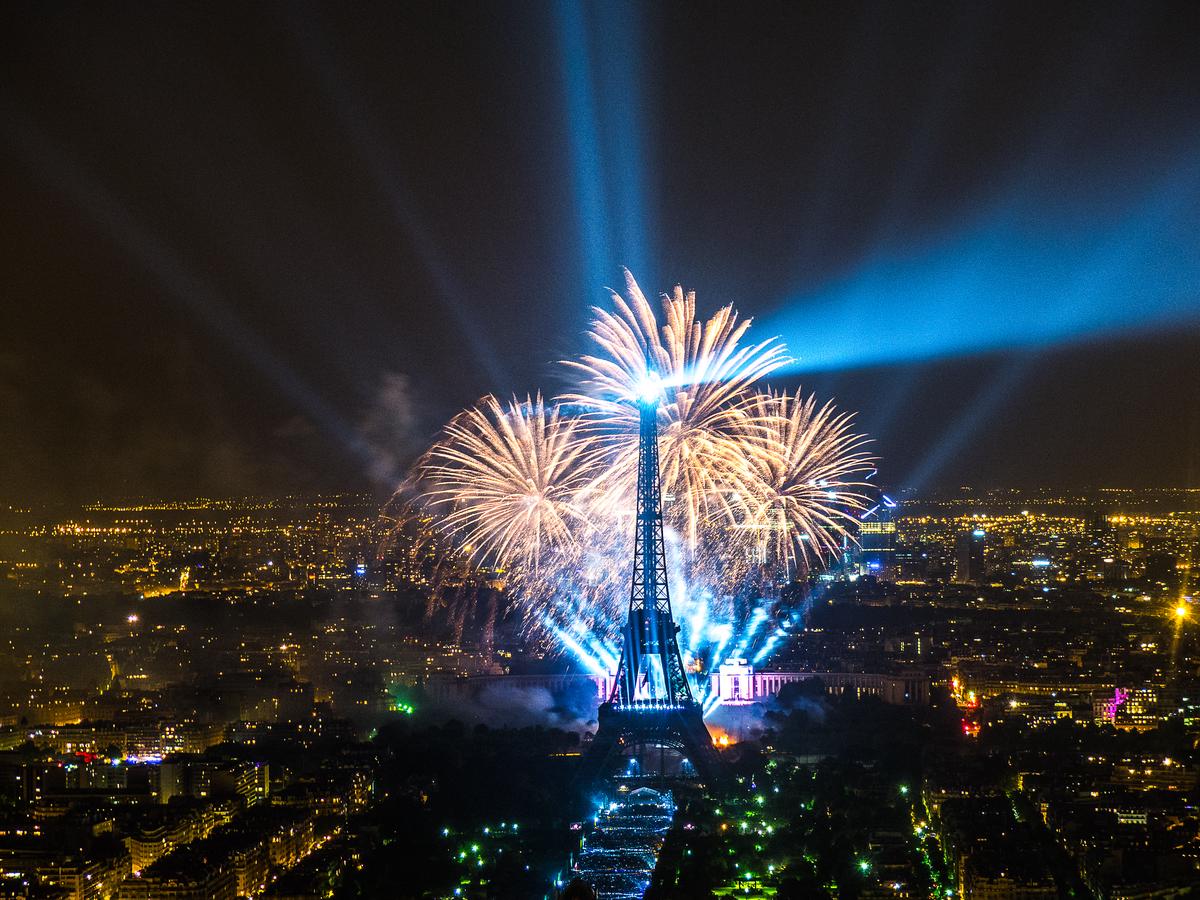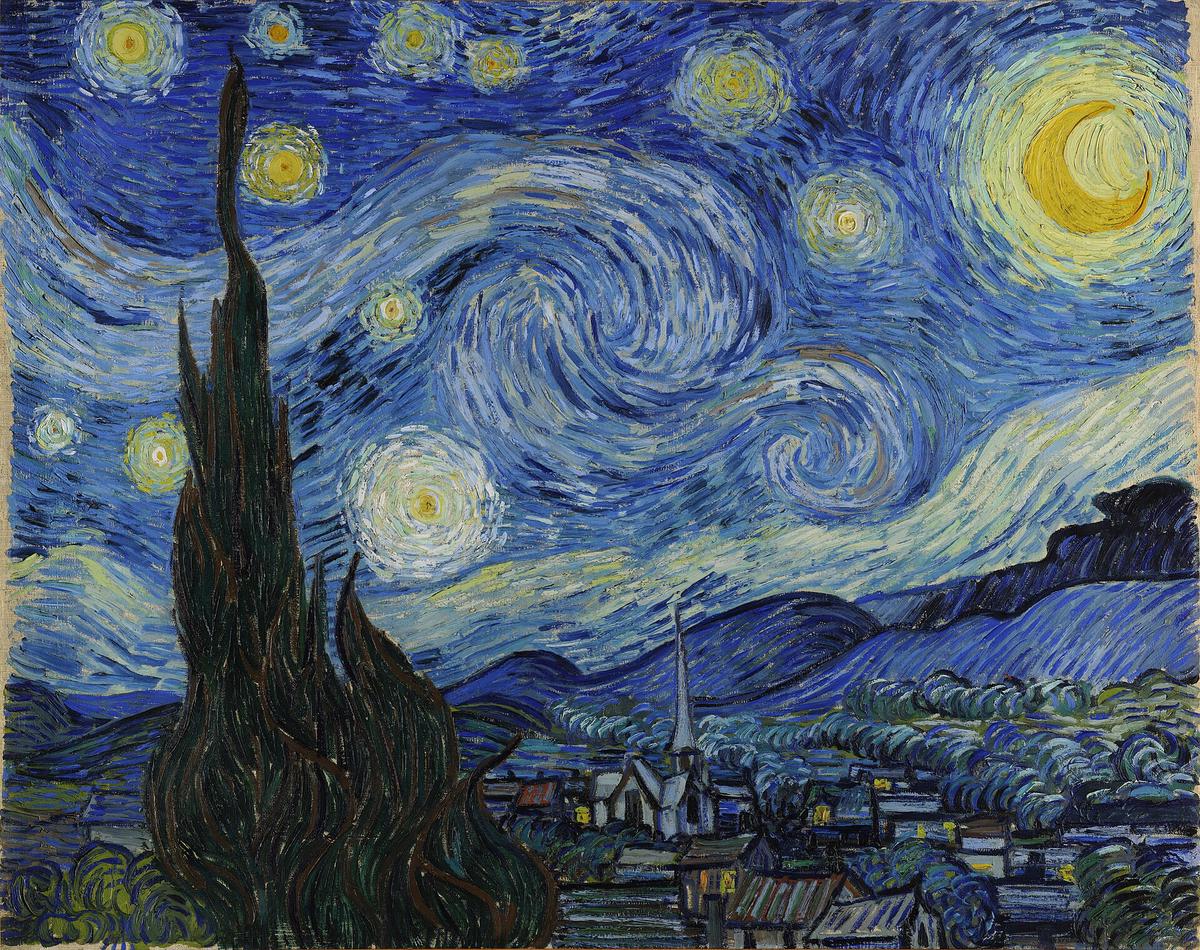Historical Context and Creation
Van Gogh painted The Starry Night during a challenging time at the Saint-Rémy asylum. The night sky offered him an escape from the modernizing world and his personal struggles. The painting reflects the tension between serenity and upheaval in Vincent's life.
Creating The Starry Night posed artistic challenges. Van Gogh painted from memory and imagination rather than direct observation, leading to bold color choices and distinctive brushstrokes. His mental state influenced the work, with each swirl mirroring his inner turmoil.
The cypress trees in the painting stand like sentinels against the swirling sky, echoing ancient symbols of eternity. Van Gogh aimed to balance stylization and emotion, though his brother Theo worried this approach might diminish genuine feeling. However, the exaggerated lines and contorted shapes resonate with viewers as deeply emotive.
Art historians have proposed various inspirations for the masterpiece, including the grand illumination of the Eiffel Tower. Van Gogh's mastery of color and texture is evident in the stark contrast of blues and yellows, creating depth and movement.
Limited by his confinement, Van Gogh drew from mental images, turning restriction into creativity. The Starry Night embodies this struggle, reflecting a mix of torment and beauty – a dialogue with the stars, human frailty, and the eternal quest for meaning amid chaos.

The Influence of the Eiffel Tower
James Hall's theory suggests an intriguing link between van Gogh's cypress trees and the newly unveiled Eiffel Tower. The tower's grand illumination and pyrotechnics may have inspired Vincent's portrayal of radiant, guardian-like cypresses in The Starry Night.
The painting's cypress trees soar upward like Egyptian obelisks, which van Gogh admired. These trees transcend mere flora, standing as mystical columns reaching into the turbulent sky. In Wheatfield with Cypresses, from the same period, the trees lean together, reminiscent of the Eiffel Tower's converging legs.
The Eiffel Tower's image as a marvel touching the sky aligns with van Gogh's artistic vision. The Starry Night's cypress trees achieve a similar feat, bridging the calm village and chaotic sky. However, attributing their magnificence solely to the tower would oversimplify van Gogh's creative process.
As van Gogh grappled with mental health issues, the cypresses often symbolized his struggles. Their resilience against the starry dynamism mirrored his battle between inner turmoil and creative spirit.
The trees serve as both subjects and symbols, embodying tension between:
- Earthly and celestial
- Tangible and ethereal
- Despair and hope
Hall's theory adds nuance to our understanding of van Gogh's work. The cypress trees in both paintings emerge as transcendent symbols, echoing his admiration for structure, form, and mesmerizing light. Ultimately, they reveal van Gogh's yearning for equilibrium between nature and human achievement, chaos and beauty.

Artistic Techniques and Stylistic Choices
Van Gogh's technical expertise in The Starry Night is as captivating as its emotional depth. His use of thick impasto creates a textured terrain that invites touch, encapsulating emotion and drawing viewers into the painting's heartbeat. This technique contributes to the sky's dynamism, making it appear in constant motion.
Contrasting colors amplify this effect, particularly van Gogh's iconic interplay of blues and yellows. The deep blues of the sky clash vibrantly with the intense yellows and oranges of the stars, creating a visual symphony that's both chaotic and harmonious. The darker tones of the cypress tree and muted hues of the village below ground the composition, emphasizing the otherworldliness of the night sky.
Van Gogh's brushstrokes create a pulsating energy, curving and curling like melodies in a symphony. His departure from naturalistic representation adds emotional depth. The stars are swirling orbs, almost sentient in their luminescence. The cypress trees, with their flame-like contours, personify the artist's emotional state.
By drawing inspiration from medieval woodcuts, Van Gogh imbues The Starry Night with a timeless quality. The exaggerated lines and forms echo ancient art while pushing the boundaries of modern expressionism. It's a beautiful paradox: a modern masterpiece rooted in historical techniques.
The result is not just a painting but a visual confluence of history, emotion, and artistic innovation. The Starry Night transcends its medium, becoming a story of human fragility and resilience, a testament to the depths of human creativity.
Astronomical Observations and Symbolism
Van Gogh's fascination with the night sky was a diligent study. "The Starry Night" embodies hours of observation from his window at the Saint-Rémy asylum, where he had an unobstructed view of the stars and planets. This opportunity allowed him to perceive the sky in all its splendor, capturing its nuances in his letters to his family.
The celestial elements in the painting carry layers of symbolism:
- Stars: With exaggerated halos, they represent Van Gogh's internal struggles and aspirations. Their luminescence is both optical and spiritual, serving as beacons of hope amid his mental instability.
- Crescent Moon: Radiating an almost eerie brightness, it highlights Van Gogh's emotional turbulence. Its placement and intensity amplify the overall dynamism of the sky.
- Venus (Morning Star): Links the heavens to the earthly sphere, echoing the artist's struggle between aspirations and reality. It became a symbol of his quest for enlightenment.
- Swirling Patterns: Thought to be inspired by scientific illustrations, particularly Lord Rosse's astronomical sketches. These spiraling lines reflect the convolutions of Van Gogh's mind and can be interpreted as symbols of life's cyclical nature.
Each element of "The Starry Night" is carefully chosen and imbued with meaning. The painting becomes a confluence of scientific observation and personal symbolism, offering a multidimensional story that transcends the canvas.
In capturing the night sky's resplendence, Van Gogh wasn't merely depicting what he saw but translating what he felt. The elevated quality of the celestial elements underscores his reverence for the night, a time when his thoughts could roam free in the silence.
"The Starry Night" offers viewers a glimpse not only into the night sky of Saint-Rémy but also into the expanse of Van Gogh's psyche. It's a testament to how far the stars can reach—beyond the heavens, into the heart of human experience.
Legacy and Impact
"The Starry Night" has evolved from an underappreciated work to one of the pillars of modern art. Van Gogh's influence radiates like the stars he so passionately painted, inspiring subsequent generations of artists.
The painting's impact on art movements:
- Expressionism: Drew from the fervor that pervades "The Starry Night," using vigorous brushstrokes and bold color palettes to convey emotional depth.
- Fauvism: Led by Henri Matisse, amplified Van Gogh's vibrant hues, pushing the boundaries of color as an emotional amplifier.
- Abstract Expressionism: Epitomized by Jackson Pollock and Willem de Kooning, took inspiration from Van Gogh's energized brushwork and thick textures.
The influence of "The Starry Night" extends beyond the art world, permeating popular culture:
- Music: Don McLean's song "Vincent" immortalized Van Gogh's life and artistry.
- Animation: Disney's "Fantasia 2000" paid homage to the painting.
- Immersive Exhibitions: Modern technology has birthed experiences that enable viewers to step into Van Gogh's world, transforming his static canvases into kinetic environments.
Its presence in major exhibitions continues to draw crowds, reaffirming its place as an iconic work in art history. When "The Starry Night" features at institutions like the MoMA or in special exhibitions, it becomes a pilgrimage site for art lovers1.
The painting's legacy serves as a beacon for artistic exploration, embodying the human spirit's quest for understanding and expression. It reminds us that beauty can emerge from chaos, that even the darkest nights can be illuminated by the stars.
"The Starry Night" bridges past and present, reality and imagination. Van Gogh's vision—a starry night teeming with cosmic energy and personal anguish—remains a universally evocative image that inspires, challenges, and consoles. It's a testament to human resilience and the power of creativity, a painting that continues to shine brightly through the ages.























